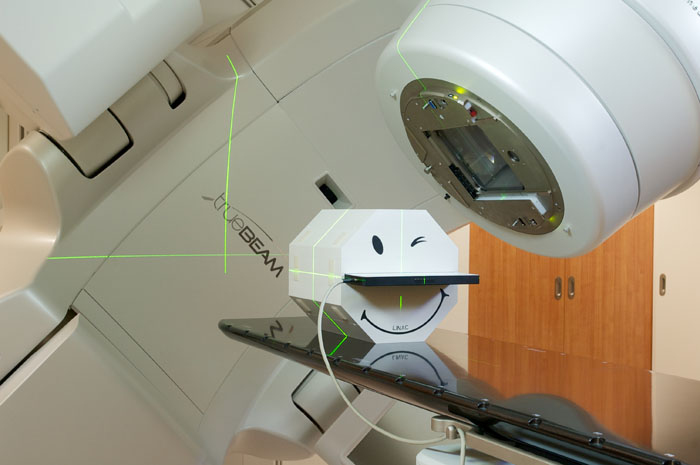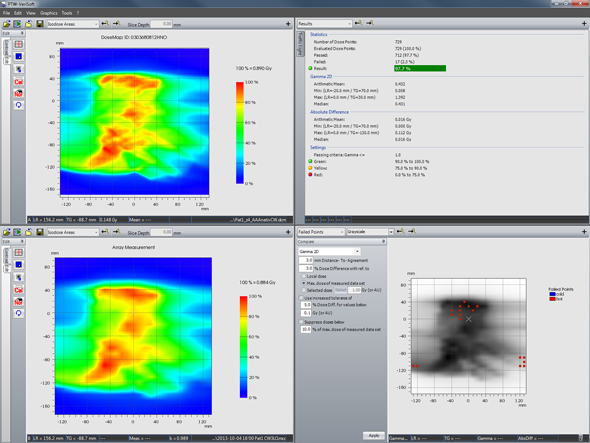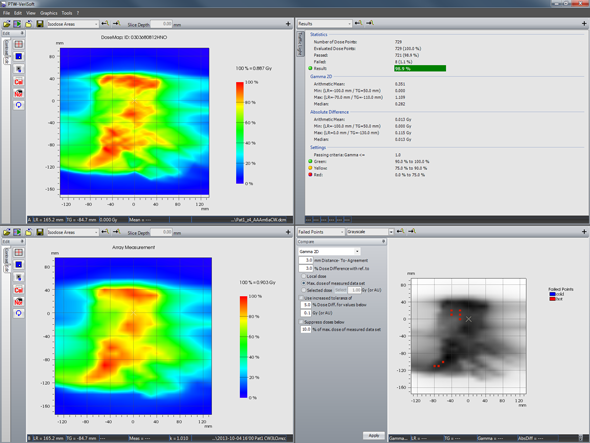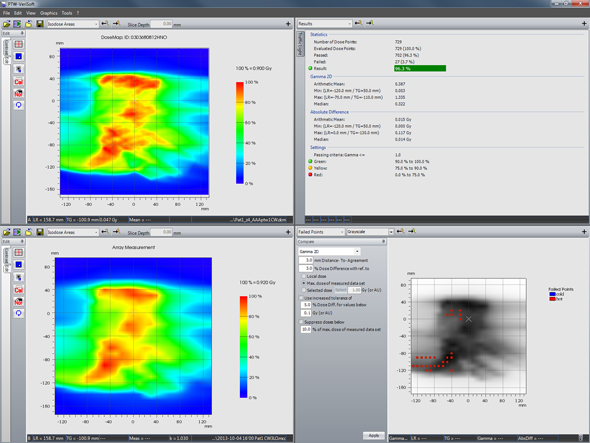Results (4)
Clinical VMAT Plans
With the OD/OP tandem in the horizontal orientation, clinical RapidArc plans were delivered on the TrueBeam.

(Fig.23: The OD/OP tandem during a RapidArc measurement.)
On the planning side, the clinical plan was recalculated in Eclipse with AAA11031 on the structure sets native, mask6a, and ptw1 with the clinical standard calculation grid size of 2.5 mm. Reference fields were either the 0° static or the 360° arc reference. It is very important that the structure set which is used for the clinical plan is also used for the reference plan, otherwise the resulting k(user) will be wrong.
Large Head and Neck Fields, 6 MV, two 360° Arcs
This clinical plan contains two very large VMAT fields. Due to the asymmetric isocenter placement, the OD/OP tandem had to be shifted away from the gantry by 4 cm. The results of the corresponding portal dosimetry verifications are here: CW (EPIQA), CCW (EPIQA), CW (VPD), CCW (VPD).
Using the arc reference field, k(user) cross-calibration factors were k(native) = 0.969, k(mask6a) = 0.990 and k(ptw1) = 1.009.
Applying the 3%/3mm criterion, the CW field yielded a GIPR (Gamma Index Pass Rate) of 97.7% for the native set,
98.9% for the structure set mask6a,
and 96.3% for the structure set ptw1:
The completely homogeneous structure set mask6a gave slightly better results than both the native and the ptw1 sets.
The second arc of this plan (CCW) had GIPRs of 99.3% (native), 100.0% (mask6a) and 99.9% (ptw1).


